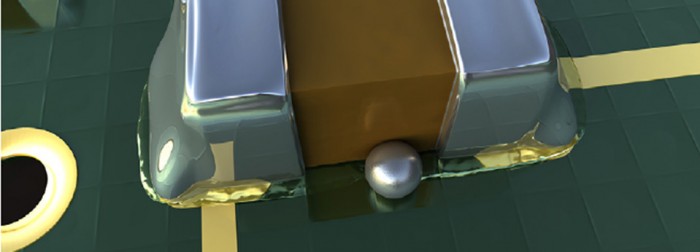Phil Zarrow: Brook, there are a number of caveats that have to be considered when we are wave soldering. One that comes, most immediate to mind, is the use of pallets. The use of aperture pallets for … We have a board that's been double sided reflow and we are doing our through hole. I would say this is probably the most popular method of accomplishing that. Yet, we have to be careful.
Brook Sandy-Smith: Absolutely.
Well, the pallets are designed to protect the areas that have SMT from seeing the heat of the wave or being touched by the molten solder. The downside of this, of course, is that they shield those areas from heat in such an efficient way that any flux that creeps underneath that fixture, and outside of the apertures that are going to be touched by the wave, that flux can stay unactivated and remain not benign, after it goes through the wave.
Phil Zarrow: Right.
Brook Sandy-Smith: So, you have this flux that could end up leading to electrochemical migration on your areas with SMT that didn't go through the wave.
Phil Zarrow: There is a very strong possibility, with these, that you are going to get this flux creep or this flux intrusion. These pallets are very well engineered to keep the molten solder out, as you mentioned. We're talking about different viscosity with the flux.
Brook Sandy-Smith: Right.
Phil Zarrow: So we do this phenomenal flux creeping as you say that presents a clear and present danger.
Brook Sandy-Smith: Mm-hmm.
Phil Zarrow: Okay. There are methods, of course, for testing for this. To see if you do, indeed, have this situation.
Brook Sandy-Smith: This is where a good process control protocol will take out the risk. You'll notice that there is more ionic residue in a certain area. You can clean that area, or heat the board to make sure that the residue becomes benign. Of course, SIR would be the best way to test electrochemical migration in this instance-
Phil Zarrow: Right. Right. But, practicality.
Brook Sandy-Smith: But, in this case that's not going to be valid. Finding another way, whether it's a ROSE test, which might not be sensitive enough to catch just the small areas that have that extra flux, or if you do some sort of local extraction.
Phil Zarrow: Pretty good. Now, the other thing we've seen, you and I've both seen, is people adding flux to the top of the board by various means. Spray bottles, turkey basters. This is a big no, no.
Brook Sandy-Smith: This is a big no, no, because that flux is on the top side of the board. While you think it might help your hole-fill, it doesn't get activated like other parts of the board. The top side doesn't go through the wave. You're once again leading yourself into an electrochemical migration nightmare where you might have flux that is not benign after you finish your processing. The way to mitigate poor hole-fill is to increase your top side preheat. As the board goes through the wave the top side is warm enough to allow the solder to wick into the holes and give you the good hole fill that you are looking for.
Phil Zarrow: Brook, where can we find out more information on these aspects of wave soldering?
Brook Sandy-Smith: You can visit us at www.indium.comfor more information on wave soldering, in general. Or, our Project 99 featured site for more information on our wave fluxes. As always, you can contact me directly at [email protected].
Phil Zarrow: Of course. Brook, thank you so much.


